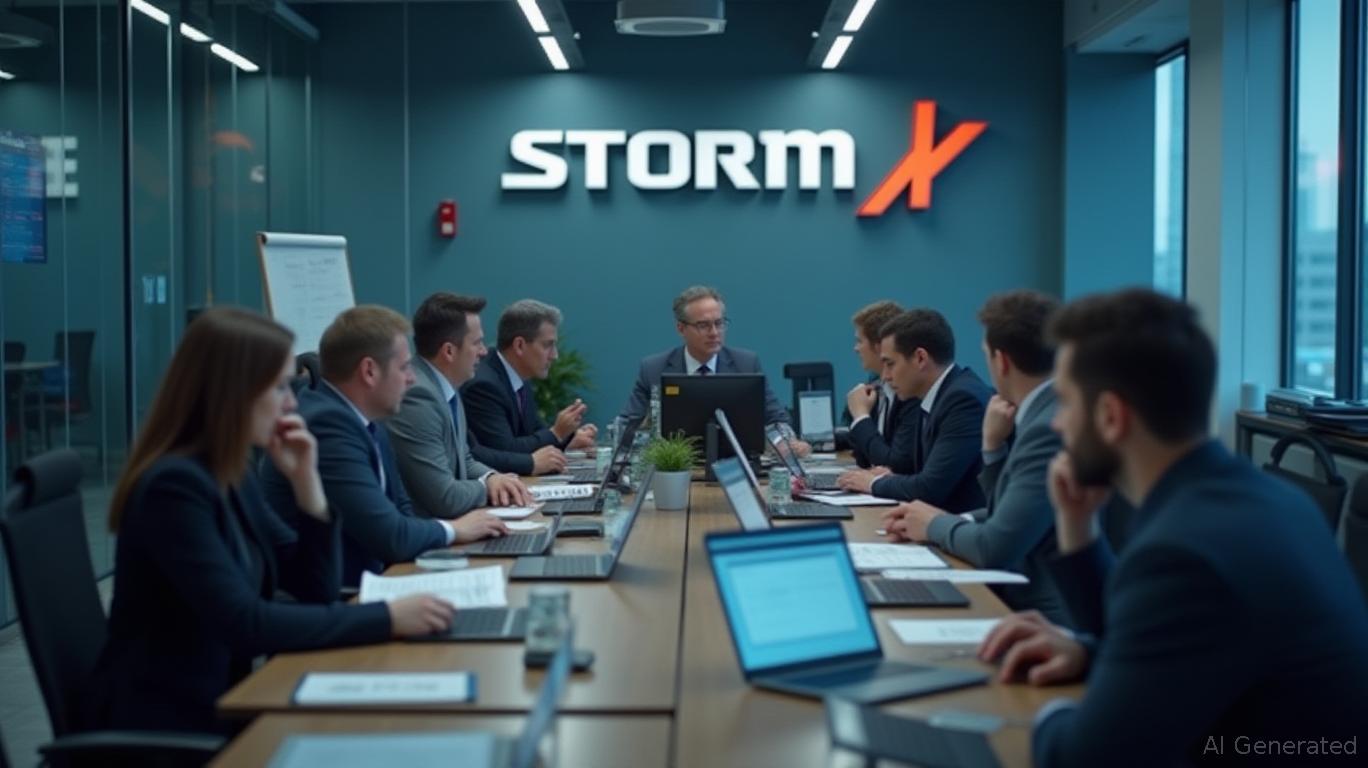AInvest Newsletter
Daily stocks & crypto headlines, free to your inbox
StormX, a prominent player in the financial technology sector, has taken a significant step by voluntarily filing for bankruptcy protection under Chapter 7 of the U.S. Bankruptcy Code. This move comes as a surprise to many in the industry, given the company's previous standing and its innovative approach to financial services. The decision to file for Chapter 7 bankruptcy indicates that the company intends to liquidate its assets and distribute the proceeds to creditors, marking a stark contrast to its earlier ambitions.
The filing for bankruptcy protection suggests that StormX has faced substantial financial challenges that it could not overcome through other means. This development is likely to have ripple effects throughout the financial technology sector, as other companies may reassess their own financial health and strategies in light of StormX's situation. The liquidation process will involve the sale of StormX's assets, with the proceeds used to pay off debts and other financial obligations. This process can be complex and time-consuming, but it is designed to ensure that creditors receive as much compensation as possible.
The decision to file for bankruptcy protection under Chapter 7 is a clear indication of the severity of StormX's financial difficulties. Chapter 7 bankruptcy is typically used by companies that are unable to reorganize and continue operating, and it involves the appointment of a trustee to oversee the liquidation process. The trustee will be responsible for selling StormX's assets and distributing the proceeds to creditors in accordance with the priorities established by the bankruptcy code.
Creditors who believe they hold a claim against StormX must submit a proof of claim detailing the amount and basis of the claim. No creditors' committee has been appointed in this case, so any proof of claim must be submitted through the court's website. This process ensures that all creditors have an opportunity to present their claims and receive fair compensation.
Previously, in July 2021, StormX raised $9 million in funding with Optimista Capital leading the round. This funding round highlighted the company's potential and the confidence investors had in its innovative approach to financial services. However, despite this initial success, StormX has now found itself in a position where bankruptcy protection is necessary.
The impact of StormX's bankruptcy on the financial technology sector remains to be seen, but it is likely to be significant. The company's innovative approach to financial services had made it a leader in the industry, and its collapse could lead to a period of uncertainty and consolidation. Other companies in the sector may need to adapt their strategies in response to StormX's bankruptcy, and investors may become more cautious about investing in financial technology startups.
The bankruptcy filing also raises questions about the regulatory environment for financial technology companies. The sector has seen rapid growth in recent years, but it has also faced criticism for its lack of regulation and oversight. StormX's bankruptcy could prompt regulators to take a closer look at the industry and consider new rules and regulations to protect investors and consumers. This could lead to a more stable and sustainable financial technology sector in the long run, but it may also create new challenges for companies in the industry.

Quickly understand the history and background of various well-known coins

Dec.02 2025

Dec.02 2025

Dec.02 2025

Dec.02 2025

Dec.02 2025
Daily stocks & crypto headlines, free to your inbox
How might the current market conditions, including tariffs and inflation, impact the overall stock market performance?
How might the potential war with Venezuela affect global oil prices and markets?
What are the potential risks and opportunities for consumer stocks in the current market environment?
What does the current market environment suggest for tech stocks?
Comments
No comments yet